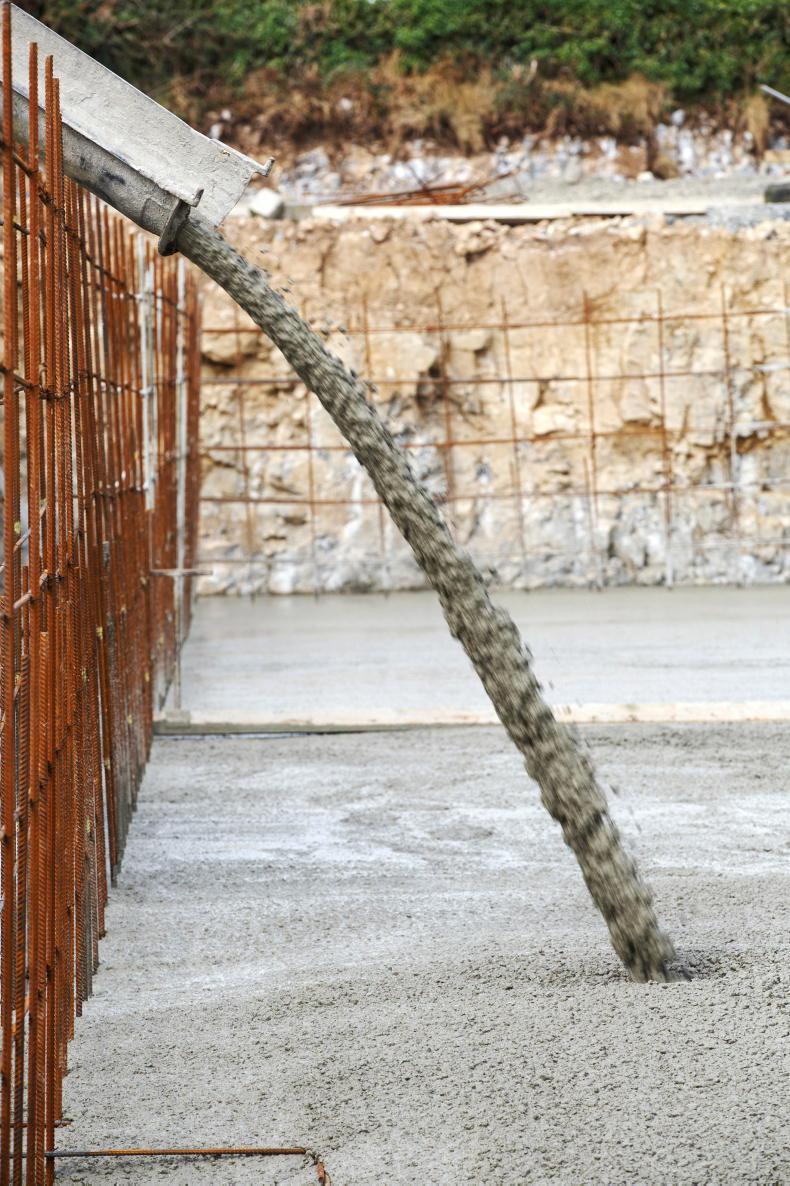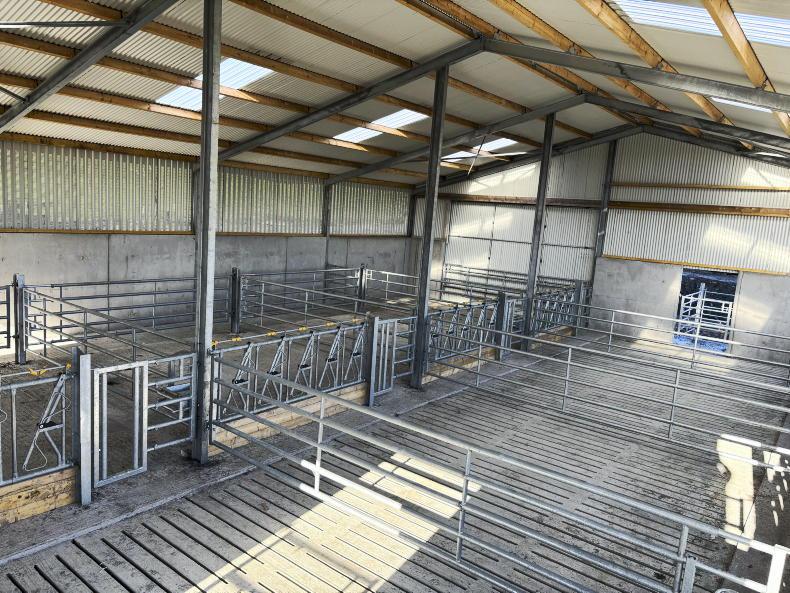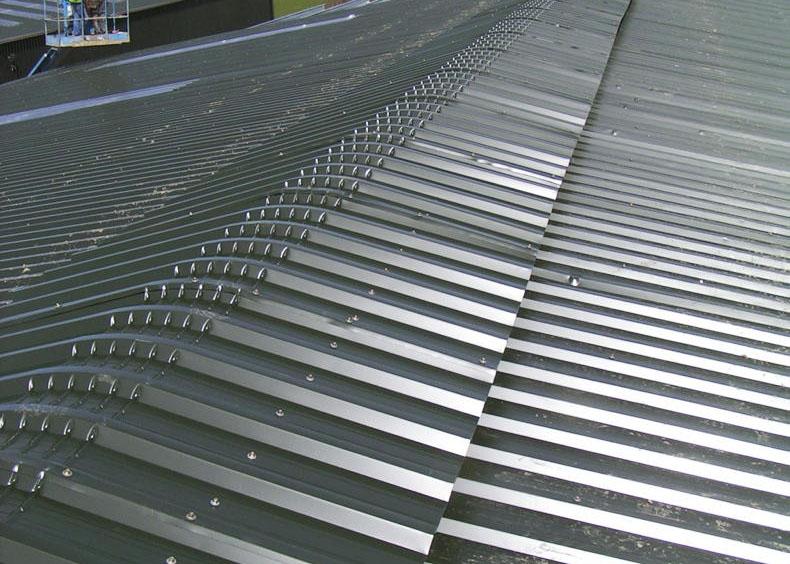Four and a half years on from COVID, and we are still feeling the after-effects of the global inflation that was spurred by it in regard to input prices in agriculture.
Feed and fertiliser, two of the main bills that farmers face each year, have contracted significantly compared to what they reached at their peak, with the same being said for some building materials such as steel and timber.
However, there are still some anomalies when it comes to farm building costs, that have remained at a high or are continuing to rise in price.
Table 1 shows the current on the ground costs of some popular items within a farm building or farmyard development.
The good
Supply is the main thing, where there are no reported issues in waiting lists or a lag in delivery time, which has made planning of developments much simpler. The more ready supply of materials has also contracted the price inflation seen in COVID times, with prices in general below their hype of 2020/2021 but still significantly above that witnessed in 2019.
Steel, one of the main components of farm buildings in Ireland, has come back into more realistic price ranges, with IP2 220 (9’’ x 4.5’’ RSJ) which is commonly used in TAMS spec buildings with spans up to 9.15m (30ft 6in) is trading at €40-€45/ m. Reinforcing steel hasn’t contracted to the same level as RSJs, with 16m rebar lengths of 6m (20ft) trading at just shy of €24/length.
The bad
Concrete precast products are still making farmers sweat when they ring up their quarry looking to order slats. When the Tullamore Farm beef shed was constructed in 2022, the total cost of the slats, agitation points and beams for under walls came to €6,000 +VAT, working out about €60/m².
The price above shows that figures have crept up in the two years following this by a rate of 10-20%. Rising ready mix prices and rebar still at a saucy price don’t lend to precast products dipping in money.
The ugly
The main prohibitive feature price-wise when it comes to farm development for many is the price of ready-mix concrete. It has continued to creep up in price in the last four years. CSO data has shown that between January 2021 and January 2024, ready-mix concrete prices had risen by 46.6% in a mere three-year period.
All the blame can’t be attributed to the defective concrete block levy (DCBL) which kicked into effect in September 2023, with a 5% levy placed on all ready-mix concrete and certain concrete products.
The scary thing about this is that there seems to be no sign of the surge in concrete price abating. One southern-based farmer recently contacted me to say that a concrete cost of €142/m³ was way out of line with what farmers in his region were paying, with the only local quarry in the area charging customers €160/m³.
Where to now?
Prices are likely to stay much the same for the medium- to short-term future. Steel and timber prices will remain relatively static, while concrete prices will hopefully do the same.
Farmers waiting for a sudden price drop in materials have been doing so for quite a while now, and its been very much a game of swings and roundabouts, where when one material drops in price (steel) another rises (concrete).
The advice is that if you require a farm development for environmental, animal welfare or cross compliance needs, then complete it soon rather than wait for prices to fall.
In short
Steel has fallen steadily and is at a respectable price now as opposed to at it’s height during COVID. Rebar steel hasn’t contracted in price as much as structural steel.Concrete is still continuing to rise in price, having risen 46.6% between 2021-2024. Concrete slats have risen by 10-20% in the last two to three years.Prices are unlikely to fluctuate too much in the medium to short term. If you require a development for environmental, cross-compliance or animal welfare grounds, do it.
Four and a half years on from COVID, and we are still feeling the after-effects of the global inflation that was spurred by it in regard to input prices in agriculture.
Feed and fertiliser, two of the main bills that farmers face each year, have contracted significantly compared to what they reached at their peak, with the same being said for some building materials such as steel and timber.
However, there are still some anomalies when it comes to farm building costs, that have remained at a high or are continuing to rise in price.
Table 1 shows the current on the ground costs of some popular items within a farm building or farmyard development.
The good
Supply is the main thing, where there are no reported issues in waiting lists or a lag in delivery time, which has made planning of developments much simpler. The more ready supply of materials has also contracted the price inflation seen in COVID times, with prices in general below their hype of 2020/2021 but still significantly above that witnessed in 2019.
Steel, one of the main components of farm buildings in Ireland, has come back into more realistic price ranges, with IP2 220 (9’’ x 4.5’’ RSJ) which is commonly used in TAMS spec buildings with spans up to 9.15m (30ft 6in) is trading at €40-€45/ m. Reinforcing steel hasn’t contracted to the same level as RSJs, with 16m rebar lengths of 6m (20ft) trading at just shy of €24/length.
The bad
Concrete precast products are still making farmers sweat when they ring up their quarry looking to order slats. When the Tullamore Farm beef shed was constructed in 2022, the total cost of the slats, agitation points and beams for under walls came to €6,000 +VAT, working out about €60/m².
The price above shows that figures have crept up in the two years following this by a rate of 10-20%. Rising ready mix prices and rebar still at a saucy price don’t lend to precast products dipping in money.
The ugly
The main prohibitive feature price-wise when it comes to farm development for many is the price of ready-mix concrete. It has continued to creep up in price in the last four years. CSO data has shown that between January 2021 and January 2024, ready-mix concrete prices had risen by 46.6% in a mere three-year period.
All the blame can’t be attributed to the defective concrete block levy (DCBL) which kicked into effect in September 2023, with a 5% levy placed on all ready-mix concrete and certain concrete products.
The scary thing about this is that there seems to be no sign of the surge in concrete price abating. One southern-based farmer recently contacted me to say that a concrete cost of €142/m³ was way out of line with what farmers in his region were paying, with the only local quarry in the area charging customers €160/m³.
Where to now?
Prices are likely to stay much the same for the medium- to short-term future. Steel and timber prices will remain relatively static, while concrete prices will hopefully do the same.
Farmers waiting for a sudden price drop in materials have been doing so for quite a while now, and its been very much a game of swings and roundabouts, where when one material drops in price (steel) another rises (concrete).
The advice is that if you require a farm development for environmental, animal welfare or cross compliance needs, then complete it soon rather than wait for prices to fall.
In short
Steel has fallen steadily and is at a respectable price now as opposed to at it’s height during COVID. Rebar steel hasn’t contracted in price as much as structural steel.Concrete is still continuing to rise in price, having risen 46.6% between 2021-2024. Concrete slats have risen by 10-20% in the last two to three years.Prices are unlikely to fluctuate too much in the medium to short term. If you require a development for environmental, cross-compliance or animal welfare grounds, do it. 









SHARING OPTIONS